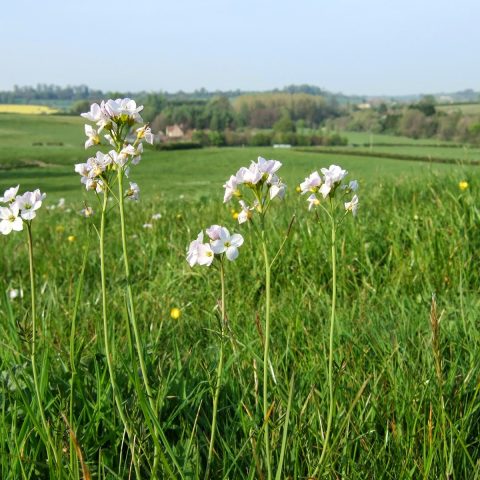Our story
Long Forest is about getting to know hedgerows. We want to teach everyone how important hedgerows are, and show people how to manage them effectively. Along with the Woodland Trust and Heritage Lottery Fund we have planted 125,000 trees with the help of 17,000 local volunteers as part of the project.
Hedgerows are a real haven for rural wildlife. They connect up the landscape so creatures of all kinds can travel between places, and find food and shelter. They act as windbreaks which is brilliant for soils. Soil loss is a big problem, especially for agricultural production, but it's not well known about. By slowing wind, hedgerows reduce the amount of soil blown away, and their roots also get a firm hold on the surrounding soil. They are also a heritage feature of our landscape and have been around for hundreds of years.
Our poor hedgerows are at risk of neglect and poor management and sadly they still get ripped out for agricultural productivity despite their importance.
Long Forest works with local communities to ensure we pass on the skills and knowledge needed for good hedgerow management. This includes traditional skills like hedgerow laying, using hand tools like billhooks and axes (and occasionally chainsaws!).
When we carefully manage a hedgerow, it could be up to 15-20 years before it needs another management session, so although it might need a trim in the meantime it's a really effective way to look after biodiversity for the long term. There are also regional styles of hedgerows too! We are careful to recognise the traditional, localised methods of hedgelaying to capture their historical essence.
Case Study: Clynfyw Care Farm
Long Forest has worked with a number of local sites, people and organisations across Wales. One example is Clynfyw Care Farm. The Farm provides opportunities for local people with disabilities to learn new skills and take part in activities like tree planting and crafts. They worked with us to improve the management of existing hedgerows at the farm, and to plant foraging hedgerows that can be harvested for fruits to go in jams, preserves and cordials made on-site. Tree mixes used include crab apple, wild cherry, sessile oak and beech.
The outdoor activity is good for mental health, and is a great opportunity to have fun while learning traditional land practices. The Farm has been planting for a few years – as the trees grow, more hedgelaying and management can be used to turn the trees into fully flourished hedgerows which historically provide food, fuel and medicine.
Our advice
Slow-to-develop projects like hedgelaying give us lots of time to learn. One of the projects has since grown over 500 gorse plants from seed, as they are hardy plants which survive where many others don't, and the root systems are great for reptiles. The group also learnt how to propagate bullis trees (a type of sloe) from seed.
There are so many opportunities to use hedgelaying skills. There has been a resurgence in recent years due to it being so good for biodiversity, mental health and heritage.
Our metrics
Number of hedgerows and trees planted and/or maintained.







